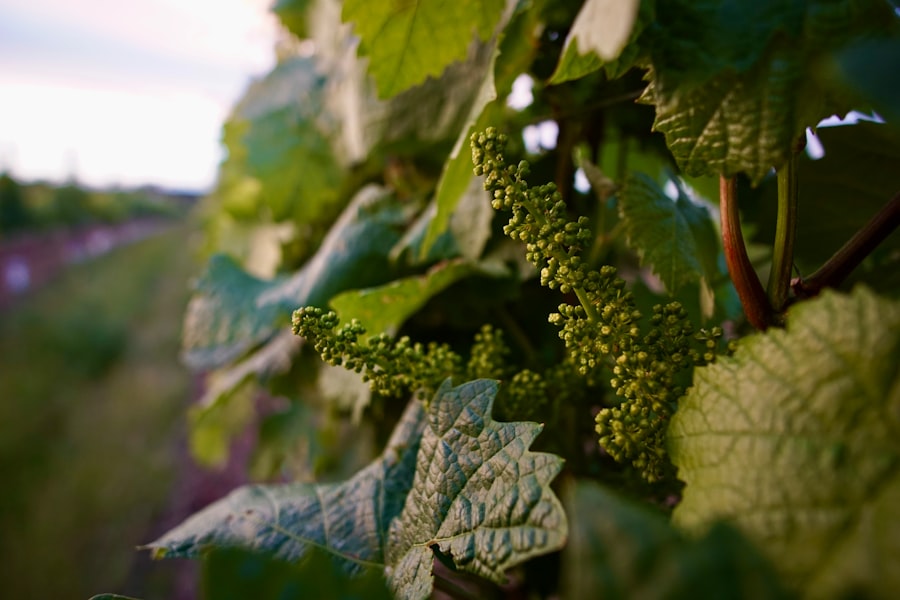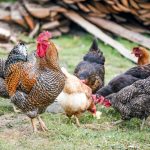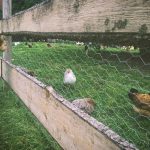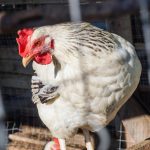Chickens face a significant risk of drowning in water troughs due to several factors. Their natural curiosity and attraction to water often lead them to investigate water sources, potentially resulting in accidental falls. Once in deep water, chickens may become disoriented or panic, exacerbating the danger.
Young or inexperienced chickens are particularly vulnerable, as they may lack the strength or coordination to escape from deep water. The design of traditional water troughs also contributes to the drowning risk. Many troughs are deep with steep sides, making it challenging for chickens to escape if they fall in.
Slippery surfaces on some troughs further increase the likelihood of chickens losing their footing and falling into the water. Chicken owners must be aware of these risks and implement preventive measures to ensure the safety of their flock. Proper water trough design and placement, as well as supervision and education about chicken behavior around water, are essential steps in reducing the risk of drowning incidents.
Table of Contents
- 1 Choosing the right water trough design for your chickens
- 2 Implementing safety measures around the water trough area
- 3 Training your chickens to drink safely from the water trough
- 4 Regular maintenance and cleaning of the water trough
- 5 Monitoring and observing chicken behavior around the water trough
- 6 Seeking professional advice for specific concerns or issues
- 7 FAQs
Key Takeaways
- Chickens are at risk of drowning in water troughs due to their curious and sometimes clumsy nature
- Choose a water trough design with shallow and wide edges to prevent chickens from falling in
- Implement safety measures such as placing rocks or bricks in the trough to provide a stepping platform for chickens
- Train your chickens to drink safely by gently guiding them to the water and rewarding them for drinking without falling in
- Regularly clean and maintain the water trough to ensure it remains a safe drinking source for your chickens
- Monitor chicken behavior around the water trough to identify any potential risks or issues
- Seek professional advice if you have specific concerns or issues with your chickens and water troughs
Choosing the right water trough design for your chickens
Safety Features to Consider
Opt for shallow water troughs with gradual slopes to allow chickens to easily access the water without the risk of falling in. Additionally, consider choosing a trough with a textured surface to provide better traction for the chickens as they drink.
Durable and Non-Toxic Materials
It is also important to select a trough that is made of durable and non-toxic materials to ensure the safety and well-being of your chickens.
Size and Capacity Matters
Another important consideration when choosing a water trough design is the size and capacity. Ensure that the trough is large enough to accommodate all of your chickens and that it provides an adequate supply of water throughout the day. This will help prevent overcrowding and competition among the chickens, reducing the likelihood of accidents around the water trough. By carefully selecting a suitable water trough design, chicken owners can significantly reduce the risk of drowning incidents and create a safer drinking environment for their flock.
Implementing safety measures around the water trough area

In addition to choosing the right water trough design, it is essential to implement safety measures around the water trough area to further reduce the risk of drowning incidents. One effective measure is to install barriers or covers around the water trough to prevent chickens from accidentally falling in. This can be achieved by using wire mesh or fencing to create a protective barrier around the trough, while still allowing easy access for the chickens to drink.
Another important safety measure is to ensure that the area around the water trough is well-lit and free from obstacles that could potentially cause chickens to trip or fall. Additionally, regularly inspect the surrounding area for any potential hazards such as sharp objects or debris that could pose a danger to the chickens. By taking these proactive steps, chicken owners can create a safer environment around the water trough and minimize the risk of drowning incidents.
Training your chickens to drink safely from the water trough
Training your chickens to drink safely from the water trough is an important aspect of preventing drowning incidents. One effective method is to introduce the chickens to the water trough at a young age and encourage them to drink from it regularly. This will help familiarize the chickens with the location of the water source and reduce their curiosity or apprehension around it.
Another training technique is to use positive reinforcement, such as offering treats or praise, when the chickens drink from the water trough without incident. This will help reinforce safe drinking behavior and encourage the chickens to approach the water trough with confidence. Additionally, consider placing multiple water sources around the chicken coop to reduce competition and encourage even distribution of drinking locations.
Regular maintenance and cleaning of the water trough
Regular maintenance and cleaning of the water trough are essential for ensuring a safe and hygienic drinking environment for your chickens. It is important to regularly inspect the trough for any signs of damage or wear, such as cracks or sharp edges that could pose a danger to the chickens. Additionally, clean the trough regularly to remove any debris, algae, or bacteria that could contaminate the water and potentially harm the chickens.
When cleaning the water trough, use a mild detergent and scrub brush to thoroughly clean the interior surface and rinse it well before refilling with fresh water. Consider implementing a regular cleaning schedule, such as weekly or bi-weekly, to ensure that the water trough remains clean and safe for your chickens. By prioritizing regular maintenance and cleaning, chicken owners can create a healthier drinking environment for their flock and reduce the risk of illness or accidents related to contaminated water.
Monitoring and observing chicken behavior around the water trough

Monitoring Chicken Behavior Around the Water Trough
Identifying Potential Risks
Monitoring and observing chicken behavior around the water trough is crucial for identifying any potential issues or risks that could lead to drowning incidents. Regularly observe how the chickens interact with the water trough, paying attention to any signs of hesitation, fear, or aggression that could indicate discomfort or potential danger.
Monitoring Health and Well-being
Additionally, monitor the overall health and well-being of your chickens, as changes in behavior or appearance could be indicative of stress or illness related to the drinking environment.
Observing Drinking Habits and Patterns
Another important aspect of monitoring chicken behavior around the water trough is to observe their drinking habits and patterns. Take note of any overcrowding or competition around the water trough, as this could lead to accidents or injuries among the chickens.
Preventing Drowning Incidents
By closely monitoring chicken behavior and addressing any concerns promptly, chicken owners can proactively prevent drowning incidents and create a safer drinking environment for their flock.
Seeking professional advice for specific concerns or issues
In some cases, specific concerns or issues related to water trough safety may require professional advice or assistance. If you are unsure about which water trough design is best suited for your flock, consider consulting with a veterinarian or experienced poultry specialist for personalized recommendations. Additionally, if you notice any unusual behavior or health issues among your chickens related to drinking from the water trough, seek professional advice promptly to address any potential risks or hazards.
Furthermore, if you encounter challenges in training your chickens to drink safely from the water trough or implementing safety measures, consider reaching out to experienced chicken keepers or joining online forums and communities for valuable insights and support. By seeking professional advice for specific concerns or issues related to water trough safety, chicken owners can gain valuable knowledge and guidance to create a safer and healthier environment for their flock.
If you’re looking for more tips on keeping your chickens safe and healthy, check out this article on building an A-frame chicken coop. Creating a secure and comfortable living space for your chickens is essential for their well-being, and this article provides valuable insights on how to do just that.
FAQs
What are the common reasons for chickens drowning in water troughs?
Chickens can drown in water troughs due to their curiosity, lack of swimming ability, and the slippery surface of the water.
How can I prevent chickens from drowning in water troughs?
To prevent chickens from drowning in water troughs, you can install a ramp or platform in the trough to allow them to easily access the water without the risk of drowning. Additionally, keeping the water level low and using shallow containers can also help prevent drowning incidents.
Are there any specific water trough designs that can help prevent chickens from drowning?
Yes, there are water trough designs with built-in ramps or platforms that can help prevent chickens from drowning. These designs allow chickens to access the water without the risk of falling in and drowning.
What should I do if I find a chicken drowning in a water trough?
If you find a chicken drowning in a water trough, carefully and quickly remove the chicken from the water. Gently dry and warm the chicken, and monitor its condition for any signs of distress or illness. It’s also important to address the root cause of the drowning incident to prevent future occurrences.

Meet Walter, the feathered-friend fanatic of Florida! Nestled in the sunshine state, Walter struts through life with his feathered companions, clucking his way to happiness. With a coop that’s fancier than a five-star hotel, he’s the Don Juan of the chicken world. When he’s not teaching his hens to do the cha-cha, you’ll find him in a heated debate with his prized rooster, Sir Clucks-a-Lot. Walter’s poultry passion is no yolk; he’s the sunny-side-up guy you never knew you needed in your flock of friends!
Meet Walter, the feathered-friend fanatic of Florida! Nestled in the sunshine state, Walter struts through life with his feathered companions, clucking his way to happiness. With a coop that’s fancier than a five-star hotel, he’s the Don Juan of the chicken world. When he’s not teaching his hens to do the cha-cha, you’ll find him in a heated debate with his prized rooster, Sir Clucks-a-Lot. Walter’s poultry passion is no yolk; he’s the sunny-side-up guy you never knew you needed in your flock of friends!







